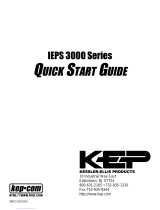
14 Summit 300-48 Switch Software User Guide
Ta b l e s
34 Client Aging Configuration Command 87
35 Switch-Level Wireless Configuration Commands 87
36 Switch-Level Configuration Property Values 87
37 Country Code Command 88
38 Country Codes 88
39 Wireless Port Configuration Commands 89
40 Wireless Port Configuration Property Values 89
41 Wireless interface Configuration Commands 90
42 Force Disassociation Command 90
43 Security Options 94
44 Wi-Fi Security Cipher Suites 96
45 VSA Definitions for Web-based and 802.1x Network Login 99
46 Network Login Configuration Commands 105
47 Authentication-Based Network Access Example 109
48 RADIUS Request Attributes 109
49 Vendor-Specific Attributes 110
50 Security Profile Commands 111
51 Security Profile Command Property Values 111
52 Security Configuration Options 112
53 HTTP and HTTPS Access Commands 113
54 Commands to Create Certificates and Private Key 114
55 Operator Commands for Port Power Budgeting 136
56 Power supplies 137
57 Power Parameter Restrictions 138
58 Power Supply Mode Commands 138
59 Per-Port LEDs 139
60 Power Over Ethernet Configuration Commands 139
61 PoE Show Commands 141
62 FDB Configuration Commands 145
63 Access Control List Configuration Commands 153
64 Traffic Type and QoS Guidelines 163
65 QoS Configuration Commands 163
66 Traffic Groupings by Precedence 164
67 802.1p Priority Value-to-QoS Profile to Hardware Queue Default Mapping 167
68 802.1p Configuration Commands 167
69 DiffServ Configuration Commands 168
70 Default Code Point-to-QoS Profile Mapping 169
71 Status Monitoring Commands 174
72 Port Monitoring Display Keys 177
73 Fault Levels Assigned by the Switch 178
74 Fault Log Subsystems 178
75 Logging Commands 180
76 Event Actions 184
77 STP Configuration Commands 189
78 STP Disable and Reset Commands 192
79 Relative Route Priorities 197





















